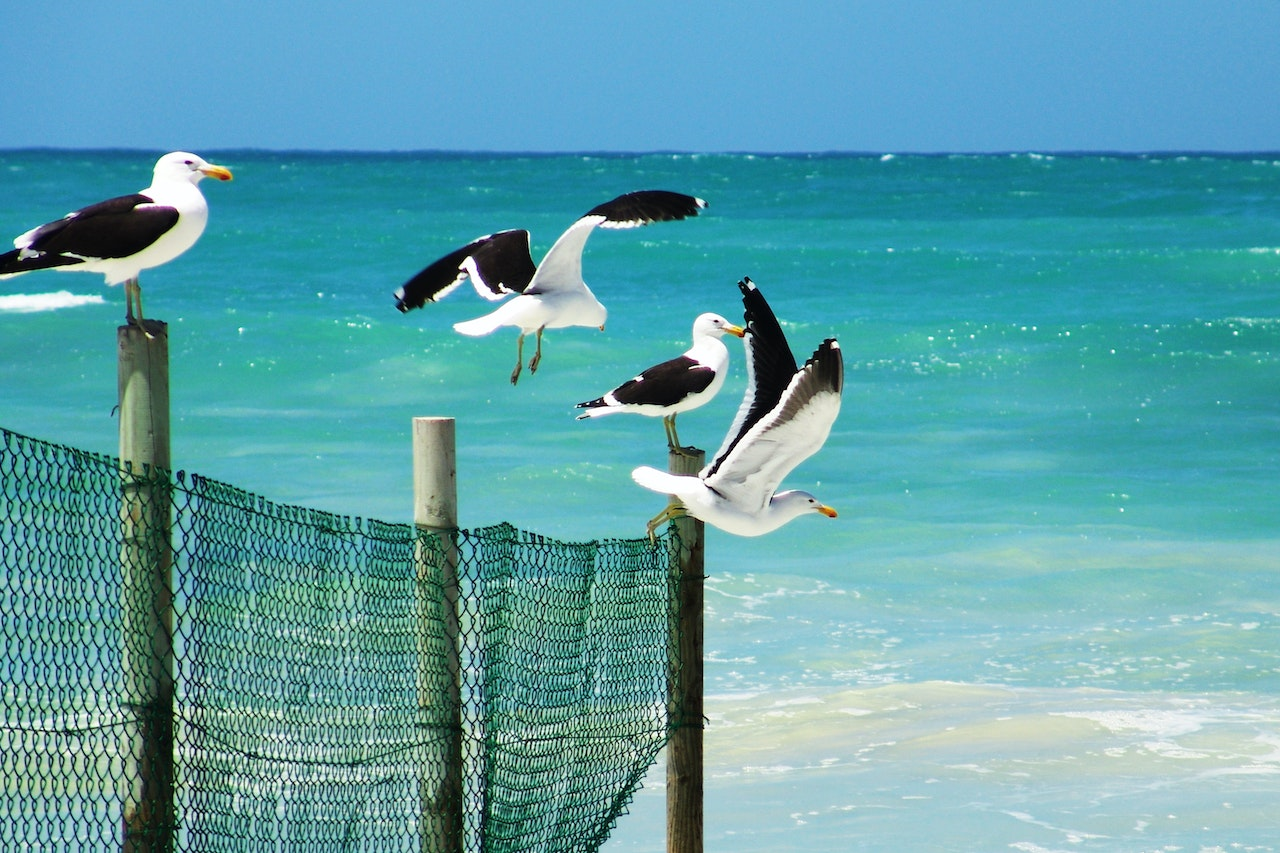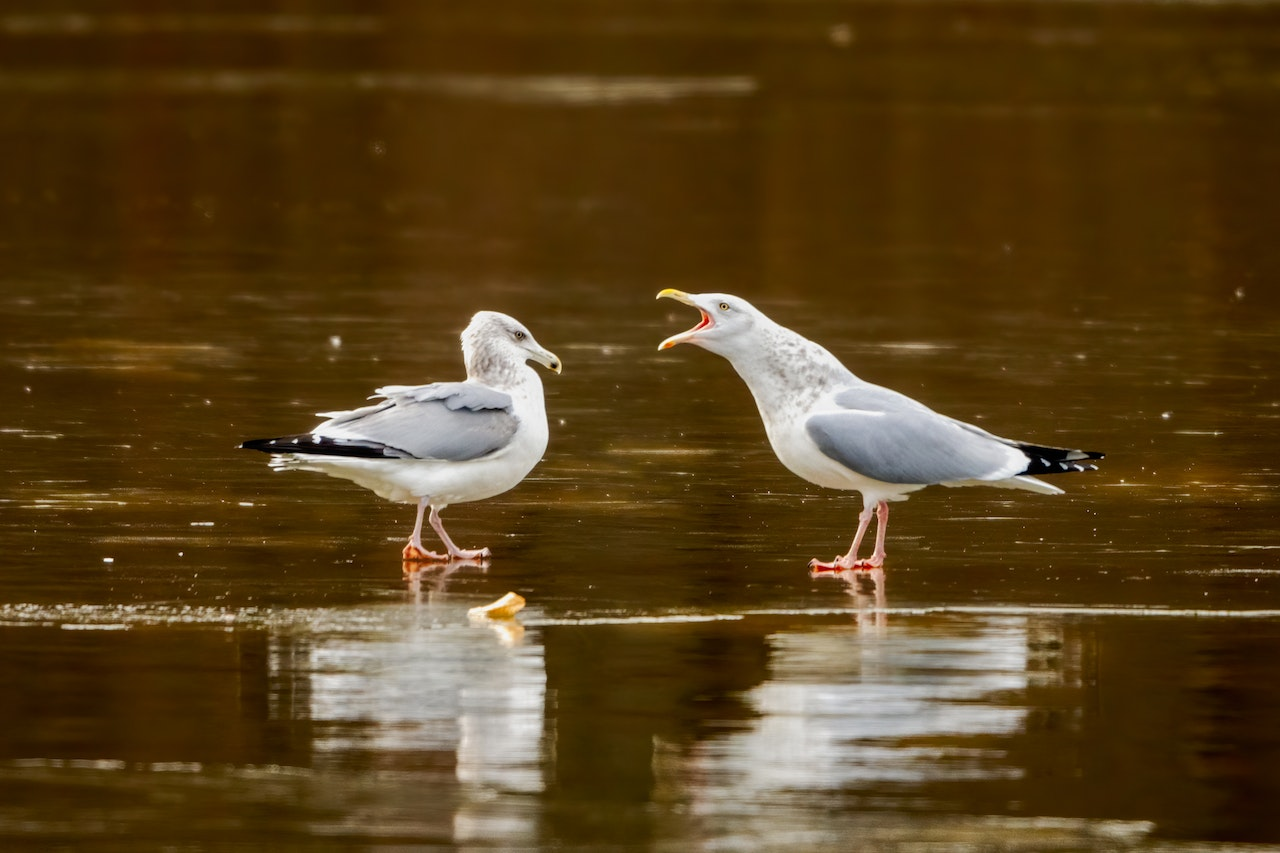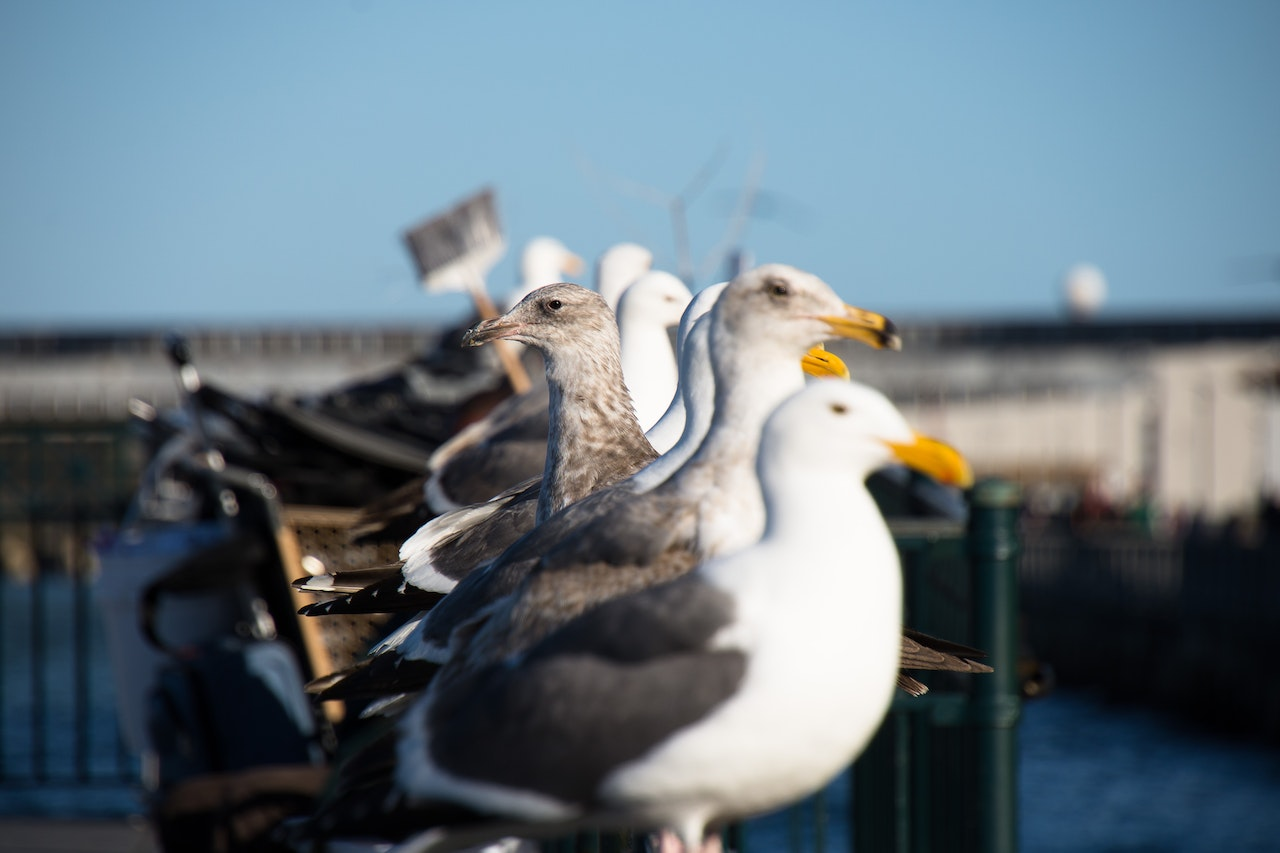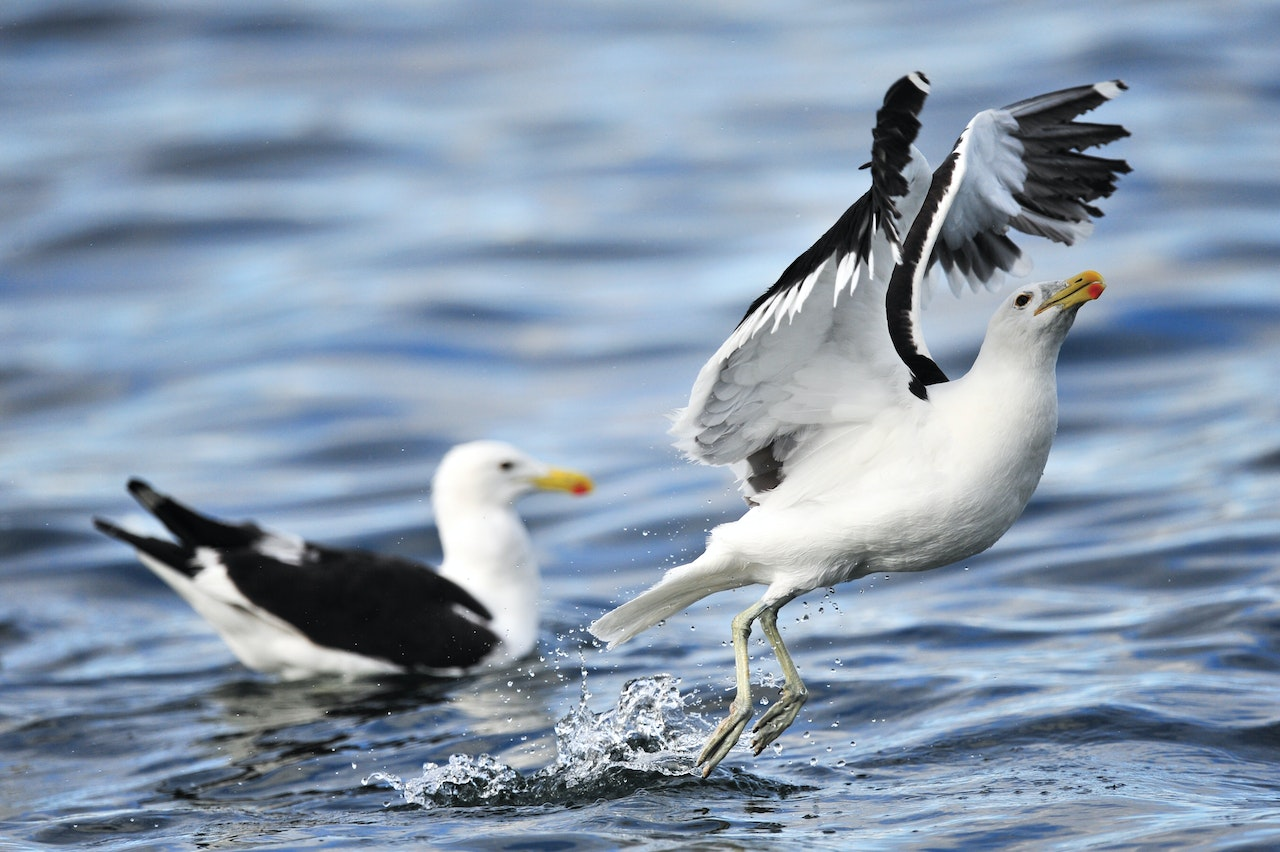Seagulls are a common sight along beaches worldwide, yet despite their apparent similarities, male and female seagulls differ greatly in several crucial characteristics. These variations may be seen in their physical traits, behaviors, and even their role in reproduction. Knowing these differences can help you gain important knowledge about the ecology and biology of these amazing birds.
The main distinctions between male and female seagulls will be discussed in this article, as well as how these distinctions affect the behavior and survival of the birds in the wild. Keep reading to learn more.
What are Seagulls

Seagulls, usually referred to as gulls, are a kind of seabird that may be found all over the world. They are a member of the Laridae family, which has more than 50 distinct species. Seagulls are usually medium to big-sized birds, and some species may reach a wingspan of up to five feet (1.5 meters). They are widely renowned for their characteristic squawking sounds, which may frequently be heard at sea and close to the coast.
Seagulls are skilled fliers and swimmers and have evolved to live in marine and coastal areas. They can swim well thanks to their webbed feet and glide freely through the air for extended periods. Being omnivorous creatures, seagulls consume many things, including fish, crabs, insects, and even trash. Because of their tremendous cultural significance, seagulls are portrayed in literature, art, and popular culture.
The History of Seagulls
The group of seabirds known as gulls, or seagulls, is widespread worldwide. They are a member of the Laridae family, together with terns and skimmers. The first known gull bird, Gaviota wymani, existed during the Late Cretaceous era, where seagull history may be traced back millions of years. Yet around 15 million years ago, a species of shorebirds gave rise to contemporary seagulls.
Seagulls are extremely versatile and may be found in various environments, including urban waste dumps, interior lakes, and coastal locations. Since they are opportunistic feeders and will consume a range of items, from shellfish and fish to insects, small animals, and human food waste, they are well recognized for their loud cries, beautiful flying, and scavenging habits.
Throughout history, seagulls have also contributed to human culture and mythology. They are frequently linked to the sea, independence, and tenacity and have appeared in literature, art, & music. They are also messengers from the gods or emblems of bad luck in other civilizations. Seagulls have a long and varied history that dates back millions of years, yet they have survived and continue to survive in a variety of habitats all over the world.
The Characteristics of Male and Female Seagulls

Both sexes of seagulls have long wings, white or light grey plumage, and hooked beaks, which make them look similar in appearance to each other. Nonetheless, there are a few minor distinctions in traits that aid in separating male and female seagulls.
🦆Size
The size of male and female seagulls is typically comparable, with minor variances. With only a few millimeters between men and females regarding body length and wingspan, most species have somewhat bigger males than females. However, in certain species, the females are bigger than the males.
For instance, male Western Gulls (Larus occidentalis) typically measure around 55 centimeters with a 137 cm wingspan, while females are somewhat bigger, coming in at about 58 cm with a 147 cm wingspan. Male Herring Gulls (Larus argentatus) are approximately 60 cm long and have a 135 cm wingspan, while females are bigger, coming in at about 64 cm and having a 150 cm wingspan. Generally, the size differences between male & female seagulls are often not appreciable, and it can be difficult to tell the sexes apart based on size.
🦆Voice
Due to the identical voices of male and female seagulls, it might be challenging to tell one from the other. Squawks, yells, and barks are just a few of the vocalizations used by male and female seagulls to communicate with one another.
Male seagulls, however, may employ certain vocalizations during the mating season to entice a partner and protect their territory. Compared to the calls they utilize for other purposes, these vocalizations may be louder and more violent. There are not many noticeable vocal distinctions between male & female seagulls. Thus it is sometimes important to look at their behavior & physical traits to establish their sex.
🦆Behavior
While the behavior of male and female seagulls is generally identical, there are noticeable changes during the mating season. Male seagulls frequently participate in courting behaviors during this period, including vocalizations, food offers to females, and aerial displays. In response to these demonstrations, females may perform airborne feats or take food from males.
Male and female seagulls will cooperate to build a nest and rear their young when a pair connection has been established. They’ll alternate between incubation the eggs and returning to the nest with food to feed the young. Because of their well-known strong pair ties, seagulls fiercely protect their nest and young from potential predators and other seagulls who could be a threat. Generally, when it comes to mating and rearing their young, male & female seagulls share certain behaviors and duties.
🦆Mating
Like most birds, seagulls have distinct mating behaviors and rituals for males and females. Male seagulls frequently participate in wooing displays to entice a partner during the breeding season. This could entail calling, strutting, or flaunting their wings and feathers. A male and a female may participate in pre-mating rituals, including circling, calling, and bringing food to one another once the male has drawn the female.
They will start to copulate after they have established a connection. Normally, seagulls pair off on the ground or in a flat area like a rock or rooftop. Males and females have reproductive organs called cloacas, which the male uses to transmit sperm to a female’s cloaca when he is perched on the female’s back. Just a few seconds pass during the procedure.
The female seagull may lay her eggs in the nest the pair built together after mating. Incubating the eggs and caring for the chicks will alternate between males and females.
🦆Lifespan
Male and female seagulls’ lifespans might differ according to their species, environment, and personal health, among other things. Most seagulls survive in the wild for 10 to 15 years on average. Several seagull species have already lived far longer, though. For instance, the herring gull may live up to 25 years throughout the wild, while the giant black gull has to live up to 27 years.
Male and female seagulls from the same species often have lifespans that are not significantly different from one another. Although, like any species, individual variation & environmental influences can alter longevity, both genders can live for about equivalent amounts of time.
Types of Gulls

Gulls, usually called seagulls, come in a wide variety of types. Many of the most prevalent gull species include.
◻️Black-Billed Gull
This gull is distinguished by its black bill, mostly snow-white head and breast, and wings coated with pale silver feathers. During the mating season, the legs of this gull change from black to red. Its only home is New Zealand, where it may be found. The Māori name for it is tarpuka.
◻️Ring-Billed Gull
The narrow yellow beak with a broad black band near the tip of this gull, which breeds in Canada and North America, makes it easy to identify. Silver feathers cover its wings, white feathers cover its neck, head, and chest, & black feathers cover its tail.
◻️Ivory Gull
This species’ smallest member could be mistaken for just a pigeon due to its tiny size. Its snow-white feathers and beak may identify it with a blue-yellow tip. Throughout Greenland, North America, and Asia, the ivory gull breeds.
◻️Herring Gull
This species is widespread across Europe, except for the southern regions, and is particularly common in Britain and Ireland. It is relatively omnivorous, eating mostly plants, fish, crustaceans, and food stolen from unknowing humans.
◻️Pacific Gull
This huge gull, native to Australia, may be identified by its orange-reddish beak, white head, and black wing & back feathers. It primarily eats crustaceans and is skilled at stealing food from other birds.
◻️Dolphin Gull
This species, distinguishable by its reddish beak and speckled head feathers, is found in Chile and Argentina. It usually builds its nests on cliffs or sandy beaches in groups of a few hundred birds.
Seagull Habitat and Location

Seagulls inhabit both inland and coastal areas across the world. They can be found along lakes, rivers, and agricultural regions but are most frequently seen around sea shores. Several seagull species migrate and cover great distances for food or breeding grounds. Seagulls are graceful birds that can survive in various environments, including cities and uninhabited islands.
They have learned to scavenge for food from human sources, including fishing boats, waste dumps, and tourist locations. Therefore they are frequently seen in regions with dense human populations. They may also hunt and consume a wide range of marine animals, including fish, crabs, & mollusks. Seagulls are a common and significant component of many inland and coastal ecosystems. They are also treasured maritime icons and a possible annoyance to human operations.
Frequently Asked Questions
How can you differentiate a male seagull from a female seagull?
Because of their comparable physical traits, it can be challenging to distinguish between male and female seagulls visually. There are, nevertheless, a few minute variations that may be seen.
What physical variations can you find between male and female seagulls?
In most seagull species, males have longer wings and more powerful beaks and are typically somewhat bigger than females. These variations, nevertheless, are frequently minute and might be hard to spot without careful attention.
Do seagulls’ plumages differ between the sexes?
Typically, there aren’t any significant color or pattern distinctions between the plumage of male and female seagulls.
How do seagulls’ behaviors differ between the genders?
Male and female seagulls behave indistinguishably from one another. Both sexes exhibit comparable eating and mating behavior and are friendly and territorial.
Are there any further ways to identify male and female seagulls?
A seagull’s behavior during mating season can be used to determine its sex. Males may act aggressively and participate in courting displays during the breeding season to entice females. This approach necessitates much observation and may not be practical in many circumstances.
Final Thoughts
Male and female seagulls exhibit many physical and behavioral similarities, but there are also some distinct distinctions between the sexes. Female seagulls are often smaller and more gentle than males, typically bigger and more aggressive. Also, male seagulls frequently defend the nest and their territory, but females are generally responsible for incubating the eggs and raising the babies.
These variations reflect the distinctive functions each sex performs in seagull reproduction and social behavior. By comprehending these variations, we may gain a deeper understanding of the complexity of seagull biology and behavior and the significance of gender relations in the natural world. Do you want to know English sparrow vs house sparrow? Click Here!

